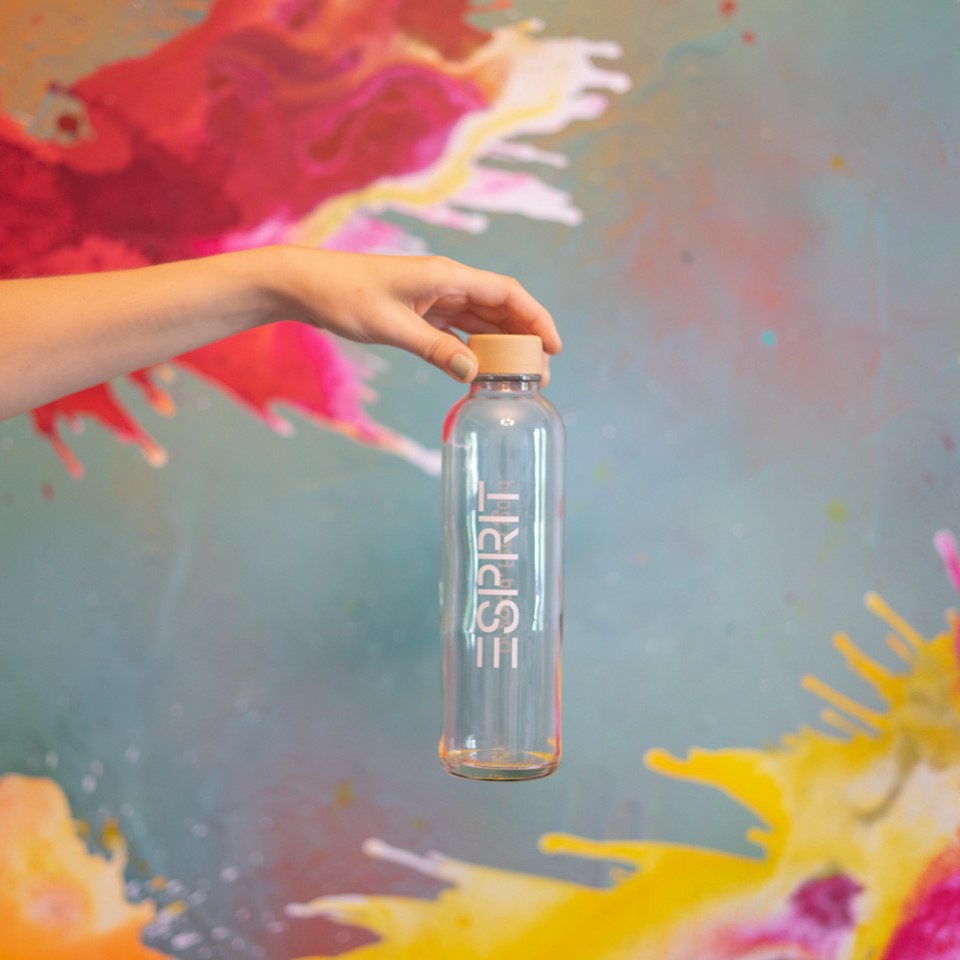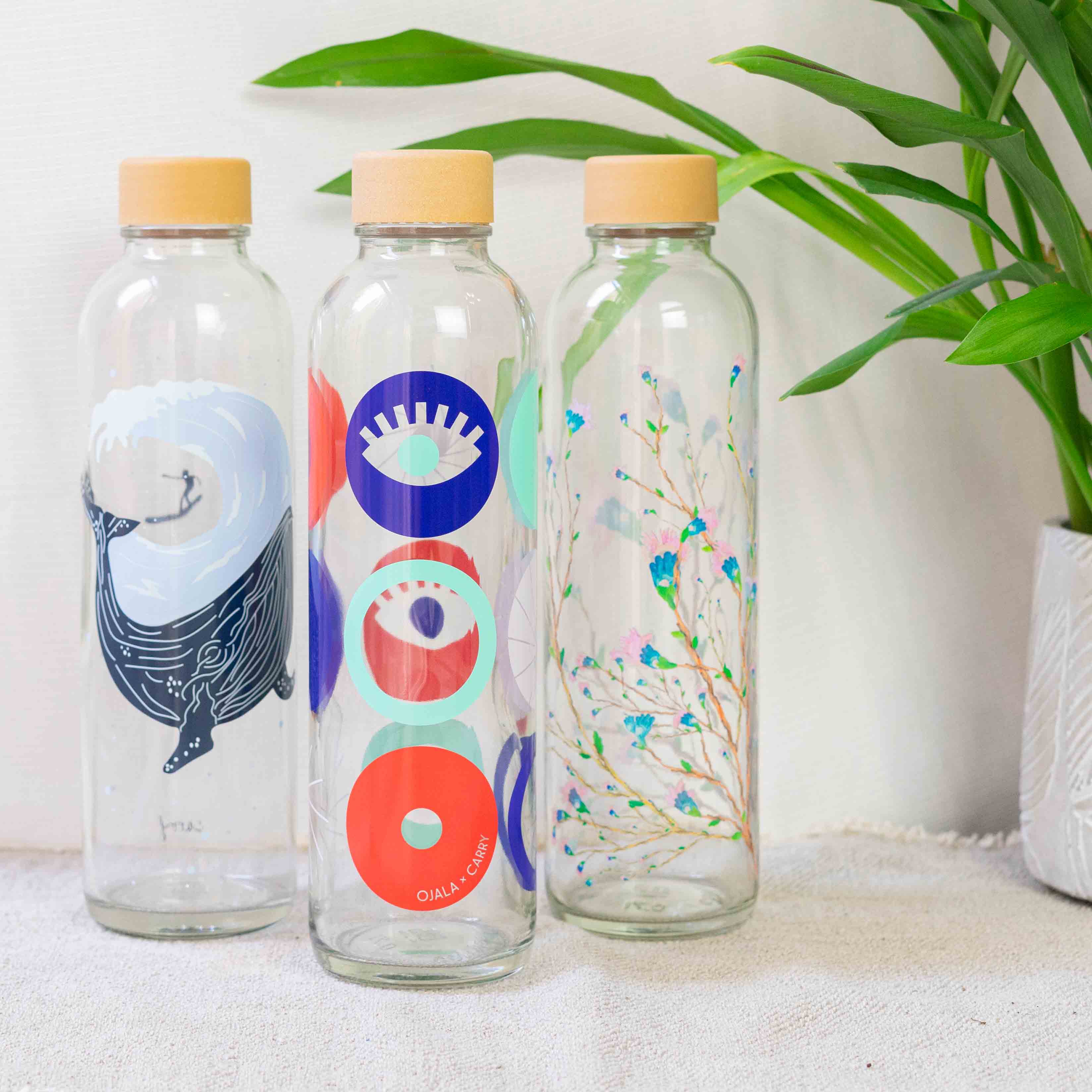In our last blog article, we took a deeper look at the water supply in Germany. This confirmed to us how important it is to reduce your personal water footprint. But what exactly is the water footprint and how can you reduce it?
What is the water footprint and how is it determined?
Every food and product has an individual water footprint. This indicates how much water a product uses in its production and depends on the product itself, the respective cultivation/production area and other general conditions. The water footprint network provides a good overview of the different categories from which the water footprint is calculated:
Green water

Green water describes the amount of rainwater that is naturally available and is drawn from the ground by a tomato, for example, without additional irrigation. Green water is currently predominantly used for agriculture in Germany.
Blue water

Blue water is water that is taken from lakes, rivers or groundwater for irrigation or production purposes. The extraction of blue water already represents an intervention in the ecosystem.
Grey water

Grey water describes water that is contaminated by production and has to be treated at great expense. The water is contaminated by pesticides, fertilizers or other chemicals, for example.
While green water is currently used predominantly for growing food in Germany, in other countries such as Spain or large regions of the global south where there is less rainwater, blue water is used primarily. And your personal lifestyle also has a water footprint, which is determined by your lifestyle and consumption.
7 tips on how we can reduce our water footprint
On average, a German consumes around 122 liters of water per day (according to the Federal Environment Agency ). This figure refers to direct water consumption, i.e. that caused by showering, washing, drinking, cleaning, etc. However, indirect water consumption, also known as virtual water consumption, is much greater - because that is an average of 3900 liters of water per person per day (!). This is caused by consumer goods, food and services.
We think that this is a shockingly high number that has not received enough attention. Of course, it is still important to keep daily direct water consumption as low as possible. But together we can have an even greater impact through our consumption habits.
We have summarized the (for us) most important adjustments here. Changing these aspects worked very well for us, perhaps you will also find some new inspiration. :)
1. Save water through food choices.
When it comes to food, tomatoes, for example, have a particularly small water footprint at 110 to 180 l/kg*. The water footprint of cocoa (27,000 l/kg), roasted coffee (21,000 l/kg) and beef (15,400 l/kg) is, however, much higher. You can read these values and others at Statista .
Seasonal and regional food
Transport routes are often not taken into account in the water footprint. Food that takes a long time to travel has a much greater impact, while regionally produced food uses less water. So while it is perfectly fine to buy German strawberries in the summer, the water footprint of Spanish strawberries in the spring or winter is much higher. Elaborately packaged and heavily processed foods also use more energy and water.
Organic food
By choosing certified organically grown food, you cannot reduce water consumption, but you can have a positive impact on the additional pollution of groundwater caused by medicines, fertilizers and hormonally active substances - in other words, the consumption of grey water. Unfortunately, there are still no uniform regulations, so it is worth taking a close look at individual producers to find out whether they distance themselves from environmentally harmful methods.

Throw away less
When you throw away food, you also waste the water that was used to grow it. That's why you can easily save large amounts of water by throwing away less food and shopping carefully. The Sirplus store, for example, is committed to reducing food waste by selling older and less "perfect" products.
2. Save water through reduced or selected consumption
- Wear clothes for a long time and repair them if possible
- Buys second hand clothes
- Pay attention to textile seals
- Buy fewer, higher-quality clothes instead of many products that break quickly.
3. Wash laundry and dishes in eco mode
Have you ever wondered why the eco mode on your washing machine or dishwasher takes much longer than normal wash cycles? This is because the laundry is soaked for longer and the water stays in the machine longer before it is changed. This means that lower temperatures and less water are needed to clean the laundry. With a little patience, you can save a lot of energy and water when washing and rinsing. The same applies to the dishwasher, of course. To prevent groundwater from being endangered, it is also sensible to use biodegradable detergents and cleaning products (such as our DIY chestnut detergent ).

4. Collect rainwater
Our water comes from the tap as a matter of course and is used with pleasure. But this is often completely unnecessary because freely available rainwater also serves the purpose. Your plants are just as happy with rainwater (or maybe even more so? :)). Even for apartments without their own gutters, there are now creative solutions for collecting water. You should also avoid using pesticides in the garden.
5. Do not dispose of chemicals down the toilet or drain
In order not to endanger the quality of the groundwater, it is important that medicines, paints, varnishes and any other chemicals are not disposed of in the wastewater. It is best to put them in the household waste or take them to special disposal sites. Or, even better, produce as little potentially harmful waste as possible. :)
6. Use a water-saving shower head
Not all shower heads are the same! Older models in particular often lead to very high water consumption, as a lot of water is ejected with little pressure. Water-saving shower heads, on the other hand, concentrate less water on a small area, so that you can have a great shower experience with little water. In some shower heads, the water is also technically prepared in such a way that the shower jet still feels very voluminous. For example, by adding small air bubbles. With a water-saving shower head, you can reduce water consumption when showering by more than 50%.
7. Repair dripping faucets
A dripping tap that loses one drop of water per second wastes 24 litres of water a day. That's 9,000 litres of valuable drinking water per year! Dripping taps are therefore not only expensive, but also very harmful to the environment. Taps usually drip because of a porous seal, which can be easily replaced.








